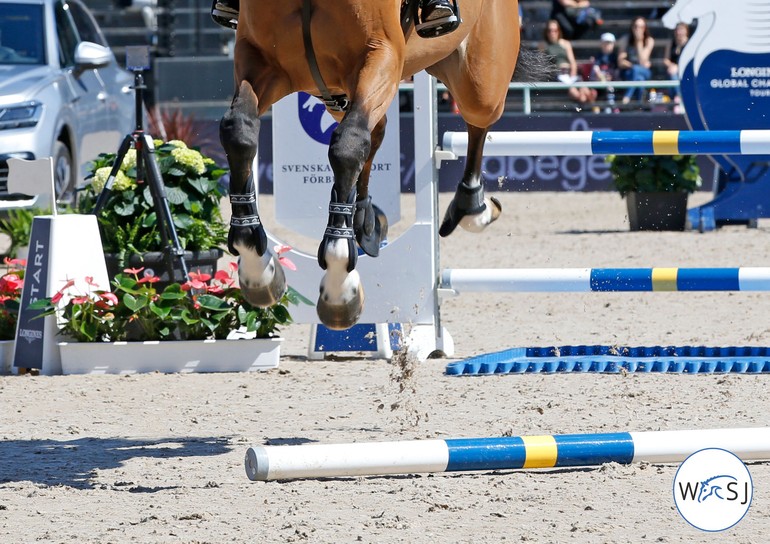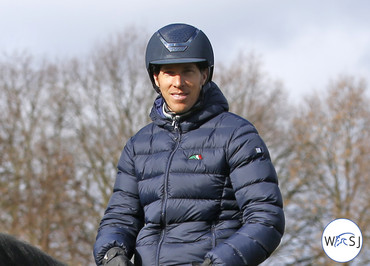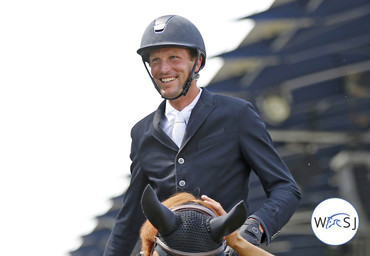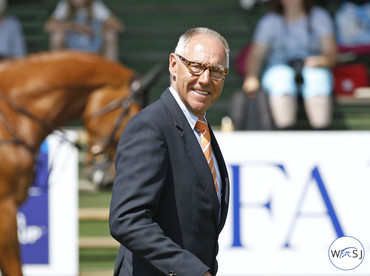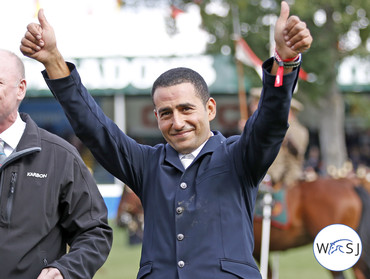The number of international events is increasing. Over the past 10 years there has been a 73 % increase in the number of jumping events, which included a growth of 105 % for the five-star events. FEI statistics show that while ten years ago there were 947 jumping events, the number increased to 1314 in 2013 and to 1634 in 2018.
Today, more riders than ever before get the chance to prove themselves at five-star level. They also get a shot at big prize money and a lot of world ranking points. While chasing the tail of the world’s best or attempting to earn as much money as they can to cover up for costs, horse management can for some riders become a challenge.
Whether or not there should be concern in regard to the number of times that horses compete yearly was discussed at the FEI Jumping Consultation Round Table earlier this summer.
“During the Jumping Round Table sessions held in Lausanne in early June, the FEI Information & Sport Technology Director offered statistics on the use of horses based only on results at FEI competitions. Following the presentation, discussions focused on the sustainable and ethical use of horses, with input from all our stakeholders, and it was agreed the ultimate responsibility for the welfare of the horse rests with the athletes and the owners,” a FEI spokesperson said.
Following the FEI Jumping Consultation Round Table, it was additionally agreed that:
- No action was required to be taken by the FEI for the time being;
- FEI would continue monitoring this aspect in the future; and
- If necessary, actions would be taken by the FEI on a case by case basis.
World of Showjumping asked some of the world’s best riders and leading Chef d’Equipes about their thoughts on the matter, and whether or not there should be a limitation to the number of classes or shows a horse can jump yearly. Here’s what they answered.
Henrik von Eckermann – Team silver medalist at the World Equestrian Games 2018
"I don’t think we should introduce a rule that limits the amount of starts a horse can do in a year. Where do we end up if we go down this road? I think instead of putting up more rules, we should all use some common sense. Should a 5* horse jump the same amount as a less experienced horse, and how about younger horses who actually do need experience? And who should decide where the limit is? And what if someone jumps more at home and less at shows? Something that would maybe be easier to implement could be a limit to the numbers of starts per weekend – like some show organisers already do, limiting starts to three per weekend. This, with exception to championships.
In general, it is alarming that we have to have these kinds of conversations and even think of the need for such rules. There are things that anyone with common sense and knowledge of horsemanship should understand without reading the rule book.
At the end of the day, I think it all comes down to the officials and the importance of them doing their job correctly. I know it is a really difficult task, but the role of the officials is much more important than creating more rules. It is their job to intervein if someone is not respecting the welfare of the horses. However, what everyone believes is in the best interest of their horse, is a start of another long discussion.”
Robert Ridland – Chef d'Equipe for Team USA
“I personally think it is good as it is. I’m against regulating common sense. If we have to get a regulation, that means the common sense has betrayed you.
The best professional riders have good horsemanship and good common sense and they don’t need to be regulated regarding the amount of shows. I’m not necessarily saying it is a bad idea, but it never occurred to me before. The riders I deal with on a regular basis don’t need that kind of regulation because they are good horse people. Horses are going to jump better and be better when they are fit and happy and it doesn’t turn into work. The riders that go in the ring too many times are making work out of it for the horses and the performances generally suffer. But I don’t know if we need to get to a regulation to that.
There was a similar suggestion for rules for course designing. I have always been of the opinion that if you hire good course designers you don’t need regulations stipulating what combinations they use and when or where, because they know. So the better solution is to have good course designers that don’t need regulations and the same applies for the riders. That is an idealistic answer to the whole thing, but your great riders don’t need this kind of regulations.”
Kevin Staut – Team Olympic Champion 2016 and European Champion 2009
"After long discussions about whether or not there should be a limit to the amount of starts a horse can do per year, the International Jumping Riders Club and I were not in favour of putting a number on it.
Instead I think we should encourage riders to discuss their decisions with their owners and their Chef d'Equipes, and to be real horsemen and horsewomen – keeping the welfare of their horses as a first priority.
The rules for the world ranking already provide us with certain limits in the case where a rider only thinks about points or prize money. If riders jump two ranking classes per day, they only earn points in the class that offered the highest of points.
I am not against jumping a horse a few days in a row in 1.45m classes, and there is a huge difference in jumping a 1.45m and 1.60m. But how should we regulate this when it comes to bigger classes? It is a really difficult question to answer and therefore, I think for now we should not put a rule on it. At the end of the day, I think the best riders are the best because they have a good system and they will continue to be successful, while others will fail.
I think that the officials are also under pressure, but I do think they should stop riders from participating if they are obviously doing too much with their horses.”
Rob Ehrens – Chef d'Equipe for the Netherlands
“I think it would be good to have a regulation on the amount of classes or shows a horse can do.
I do believe though that the riders make that management good enough at the moment, but maybe it is sensible with a regulation as to the quantity of shows and I think this is a problem that the FEI needs to solve.”
Andy Kistler – Chef d'Equipe for Team Switzerland
“I don’t think there should be a regulation. We discussed this at the FEI Round Table, and they also had statistics that showed that this is not such a problem. Secondly, I think the riders should learn and respect and be responsible for what they are doing. If they are not – and this will sound quite harsh - they are getting the results from bad management.
I think it depends from horse to horse how many shows a year that is suitable. If we look at a super example on our team, which is Steve Guerdat – he always does a period of shows and then there is a break and then a period of showing again. You need to have a feeling for your horse. I think that horse management is one of the most important things for a rider to be more successful.”
Sameh El Dahan – Winner of the CN International presented by Rolex 2018
“I think it is a hard thing to put a number on it. For me, it all depends on the horsemanship of the person and their partnership with the horse. There are so many factors; the age and experience as well as the soundness of the horses… To put a limit on it, in my opinion it is not about mathematics, I think it is about the feeling you have as a rider. And as a rider, you also have to listen to the team around you. You also have to consider whatever is the best scenario to each horse, it is all up to the riders’ feeling.
The main thing is the horsemanship. If you lack that as a rider, you will struggle. When we are dealing with another soul, with another animal, we have to pay attention to what they say. There are so many good riders that you see competing with horses aged 17, 18 – because those horses have been looked after so well over the years. From a rule point of view, it is more or less actually up to the officials to pay attention. You see riders riding with empathy, you see riders riding aggressive. These things should be communicated directly with the riders; it does not have to be an elimination, it can be just a private conversation, to make the riders realize that they are being watched. Our governing body should explain their point of view and give guidelines.
Unfortunately, horses cannot speak and bless their hearts, they will try until their last breath. In different competitions, you can sometime use bad rounds to teach horses something, but maybe say in the bigger classes you could ring the bell after a certain amount of penalties. We put a lot of heart and soul into showjumping, and there are a lot of good riders who look after their horses better than their families. From the public point of view, we have to pay attention to the image we are giving out and to have too many penalties can give out a wrong impression.”
Jos Lansink – World Champion 2006
”I think your horsemanship should decide how many shows you do. Some horses need a few more shows in a row or more shows in the year than others, and I think that every rider has to decide for themselves. On a general basis, my opinion is that 15-20 shows a year is enough. What is very important is that you at the end of the year still have a good, fresh and sound horse.
With the money that goes around now at some shows, there are for sure some riders that look more to the money than to their horses. A good horseman looks more to the horse than the money.
Maybe these are different times, but the year I won the World Championship with Cumano I was sure I was on the team. I could plan for that and the year ahead of that championship he only did five shows. “
No reproduction without permission, copyright © World of Showjumping



